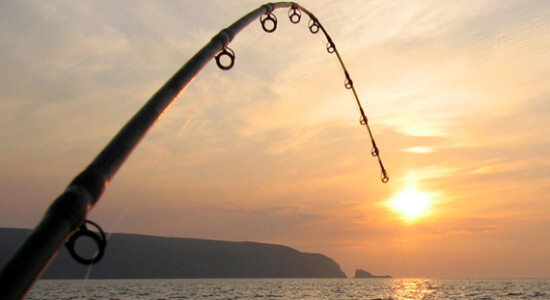Fiskning, the Swedish term for fishing, is a beloved pastime and sport that combines relaxation, skill, and the thrill of the catch. Whether you’re a seasoned angler or a curious beginner, this comprehensive guide delves into the art and science of fiskning. From various fishing techniques and essential gear to tips for success and conservation efforts, we aim to enhance your fiskning experience.
The Importance of Fiskning
Fiskning is more than just a recreational activity; it fosters a connection with nature, promotes sustainable practices, and can be a vital source of food. Understanding its significance helps appreciate the deeper value of this ancient practice.
Types of Fiskning
Freshwater Fiskning
Freshwater fiskning takes place in rivers, lakes, and streams. Popular species include bass, trout, and catfish. Techniques often involve casting, fly fishing, and trolling. Freshwater fiskning is accessible and diverse, offering different experiences depending on the location and time of year.
Saltwater Fiskning
Saltwater fiskning occurs in oceans and seas, targeting species such as tuna, marlin, and sea bass. Methods such as deep-sea fiskning and surfcasting are commonly used. Saltwater fiskning can be more challenging due to the size and strength of the fish, as well as the conditions of the open sea.
Fly Fiskning
Fly fiskning, known for its artistic approach, uses lightweight lures called flies. It’s effective in both freshwater and saltwater environments, requiring precise casting techniques. Fly fiskning is often associated with trout fishing in streams and rivers but is also used for saltwater species in coastal areas.
Ice Fiskning
Ice fiskning involves drilling holes into frozen bodies of water to catch fish beneath the surface. It requires specialized gear, including ice augers, rods, and shelters. Ice fiskning is popular in colder climates and offers a unique experience, allowing anglers to fish in winter conditions.
Shore Fiskning
Shore fiskning allows anglers to fish from the banks of rivers, lakes, or the ocean. It’s accessible and doesn’t require a boat, making it ideal for casual fishing trips. Techniques can vary widely, from using simple bait and tackle to more complex rigs and lures.
Boat Fiskning
Boat fiskning provides access to deeper waters and a wider range of species. Techniques vary from trolling, where bait is drawn through the water, to bottom fishing, which targets species living near the sea or lake floor. Boat fiskning offers versatility and the potential for larger catches.
Fishing Gear and Equipment
Rods and Reels
Choosing the right rod and reel is crucial. Factors include the type of fiskning, target species, and personal preference. Spinning, baitcasting, and fly rods are popular options. Each type has specific uses, with spinning rods being versatile and easy to use, baitcasting rods offering precision and power, and fly rods designed for the unique demands of fly fiskning.
Fishing Lines
Fishing lines come in various types, including monofilament, fluorocarbon, and braided. Each type has its advantages, depending on the fishing conditions and target species. Monofilament is versatile and easy to handle, fluorocarbon is nearly invisible underwater, and braided lines offer high strength and sensitivity.
Hooks and Bait
Selecting the appropriate hooks and bait enhances the chances of a successful catch. Options range from live bait like worms and minnows to artificial lures designed to mimic the appearance and movement of prey. The choice of hooks and bait depends on the target species and fishing conditions.
Tackle Boxes
A well-organized tackle box keeps essential gear handy. It should include extra lines, hooks, lures, pliers, and other necessary tools. Tackle boxes come in various sizes and configurations, allowing anglers to customize their setup based on their needs.
Safety Gear
Safety gear is essential, especially for boat fiskning. Life jackets, first aid kits, and communication devices ensure a safe fishing experience. Additional safety items like sun protection, hydration, and emergency supplies are also important, particularly for longer trips.
Fishing Techniques
Casting Techniques
Casting involves throwing the line and bait into the water. Techniques like overhead casting, sidearm casting, and roll casting suit different fishing environments. Overhead casting is the most common and effective for distance, sidearm casting is useful in tight spaces, and roll casting is ideal for fly fiskning in areas with limited backcast room.
Trolling
Trolling involves dragging bait or lures behind a moving boat to cover a larger area and attract fish. This technique is effective for species that follow moving prey and is commonly used in both freshwater and saltwater environments.
Jigging
Jigging uses a weighted lure (jig) that is jerked up and down to attract fish. It can be done from a boat or shore and is effective for species that respond to erratic movements.
Drifting
Drifting allows the boat to move with the current while bait or lures are presented to fish in a natural manner. This technique is useful in rivers, lakes, and coastal waters where currents can carry bait to fish.
Bottom Fishing
Bottom fishing targets species that live near the sea or lake floor. It involves using weighted rigs to keep the bait on or near the bottom, where fish like catfish and snapper are commonly found.
Fly Fishing Techniques
Fly fishing requires specific casting techniques to present the fly naturally. Techniques such as the false cast, roll cast, and spey cast are used to control the fly’s movement and placement.
Fishing Tips and Tricks
Seasonal Fishing Tips
Understanding seasonal patterns helps target fish more effectively. Fish behavior changes with the seasons, affecting their feeding and movement patterns.
Choosing the Right Bait
Selecting the right bait involves considering the target species, water conditions, and time of year. Matching the bait to the natural food sources of the fish increases success.
Reading Water Conditions
Observing water conditions, such as temperature, clarity, and flow, helps determine the best fishing spots and techniques. Fish are influenced by these factors, which affect their behavior and location.
Patience and Persistence
Successful fishing often requires patience and persistence. Conditions can change, and it may take time to locate and catch fish. Staying persistent and adaptable increases the chances of a successful outing.
Environmental Considerations
Sustainable Fishing Practices
Practicing sustainable fishing helps preserve fish populations and ecosystems. Techniques like catch and release, respecting size and bag limits, and using eco-friendly gear contribute to conservation efforts.
Understanding Ecosystems
Understanding the ecosystems where you fish helps appreciate the interconnectedness of species and the importance of preserving habitats. Healthy ecosystems support robust fish populations and recreational opportunities.
Impact of Pollution
Pollution negatively affects fishing environments, impacting fish health and populations. Reducing pollution through proper waste disposal, using non-toxic gear, and supporting clean water initiatives helps protect fishing habitats.
Common Fishing Challenges
Weather Conditions
Weather conditions significantly impact fishing. Wind, rain, and temperature changes affect fish behavior and safety. Monitoring weather forecasts and being prepared for changes enhances the fishing experience.
Equipment Malfunctions
Equipment malfunctions can disrupt a fishing trip. Regular maintenance, carrying spare parts, and knowing how to troubleshoot common issues help mitigate these challenges.
Locating Fish
Finding fish can be challenging, especially in large or unfamiliar bodies of water. Using fish finders, observing wildlife behavior, and understanding fish habits improve the chances of locating fish.
Personal Stories and Case Studies
Memorable Fishing Trips
Sharing stories of memorable fishing trips highlights the joys and challenges of the sport. These narratives can inspire and educate other anglers.
Success Stories
Success stories from experienced anglers provide valuable insights and motivation. Learning from others’ experiences helps improve fishing skills and techniques.
Expert Insights
Quotes from Professional Anglers
Professional anglers offer wisdom and tips based on years of experience. Their insights can help anglers of all levels refine their techniques and approach.
Tips from Fishing Guides
Fishing guides share practical advice on local conditions, effective techniques, and safety practices. Their expertise enhances the fishing experience and increases success rates.
Conclusion
Fiskning is a multifaceted activity that combines skill, patience, and an appreciation for nature. By understanding various fishing techniques, using the right gear, and considering environmental factors, anglers can enjoy a rewarding and sustainable fishing experience. Whether you’re fishing in freshwater, saltwater, or through the ice, there’s always something new to learn and enjoy in the world of fiskning.
Read More : ADVANCED SOLUTIONS TO SIMPLIFY INVENTORY MANAGEMENT SYSTEM







